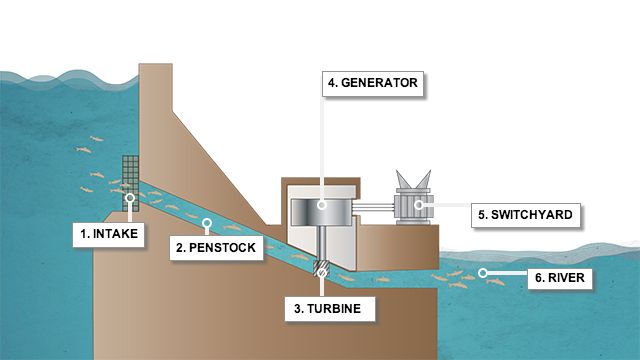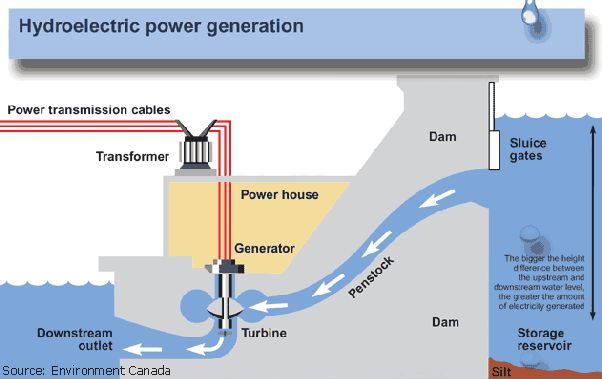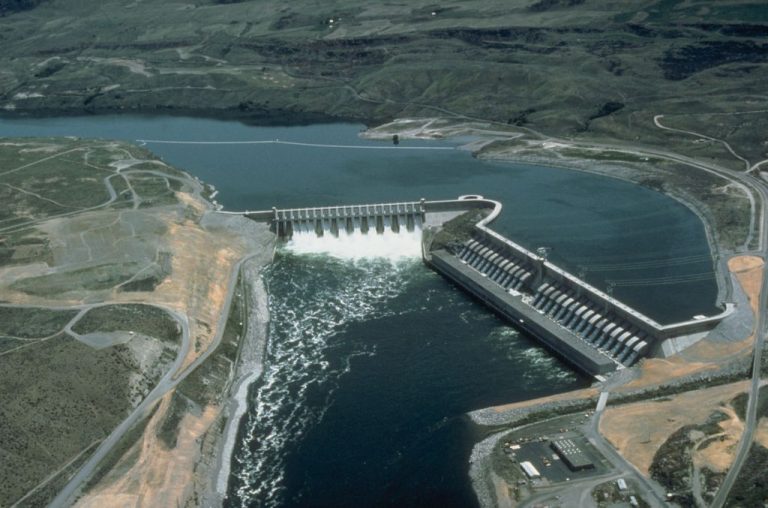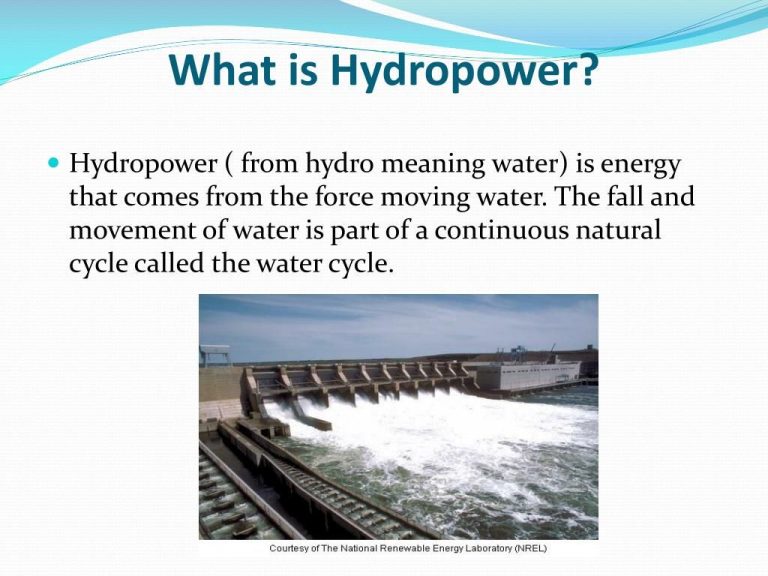How Do You Use Hydroelectric In A Sentence?
Definition of ‘hydroelectric’
Hydroelectric refers to the generation of electrical power using flowing water. It comes from the Greek roots “hydro” meaning water and “elektron” meaning amber, which was used in ancient times to generate static electricity. Hydroelectric power plants convert the energy in flowing water into electricity by spinning turbines connected to generators.
The movement of water drives the turbine blades which rotate a shaft connected to a generator. The generator contains magnets that spin around copper wire coils, producing an electric current through electromagnetic induction. This electricity can then be transmitted over power lines to homes, businesses, and industries.
So in essence, hydroelectricity utilizes the natural energy of flowing or falling water to produce electricity in a renewable and sustainable manner.
Brief history
Hydroelectric power generation dates back to the late 1800s with the construction of the first hydroelectric plants. In 1878, the Brush Electric Company built a hydroelectric power station to provide electricity to a Brush Arc Light street lamp in Grand Rapids, Michigan. This is considered the first central power station in the United States. In the 1880s, hydraulics and mechanical engineers further developed technology like the hydraulic turbine generator which enabled more efficient hydroelectric power generation. Notable early hydroelectric plants include the Adams Power Plant completed in 1895 at Niagara Falls, providing electricity to Buffalo, New York. The Edward Dean Adams Power Plant was the first large-scale hydroelectric power plant in the world. In the early 1900s, many more hydroelectric plants were constructed around the world, ushering in widespread electrification globally.
Hydroelectric Power Generation
Hydroelectric power is generated by using dams on rivers to store water in reservoirs. The water in the reservoir has potential energy due to its height above the river downstream. The stored water can be released through turbines to generate electricity.
Dams are constructed to create reservoirs, which allow water to be stored at an elevation higher than the turbines. This height difference creates potential energy due to gravity, which gets converted into kinetic energy as water flows through the penstock pipes. The fast-moving water spins hydraulic turbines, which are connected to generators that convert the mechanical energy into electrical energy.
There are two main types of hydroelectric turbines – impulse and reaction turbines. Impulse turbines like Pelton wheels use the velocity of water to move the runner and discharges water to atmospheric pressure. Reaction turbines like Kaplan, Francis and propeller turbines allow water to flow through the runner and discharges water at low pressure. The spinning turbine shaft is connected to the rotor of a generator, which rotates within a magnetic field to produce electricity.
The amount of electricity generated depends on the volume of water and the height from which it falls. Larger reservoirs allow more electricity to be generated. The electricity produced is proportional to the head and flow rate. Hydroelectric plants provide a reliable and renewable source of energy that can quickly respond to peaks in electricity demand.
Advantages of Hydroelectric Power
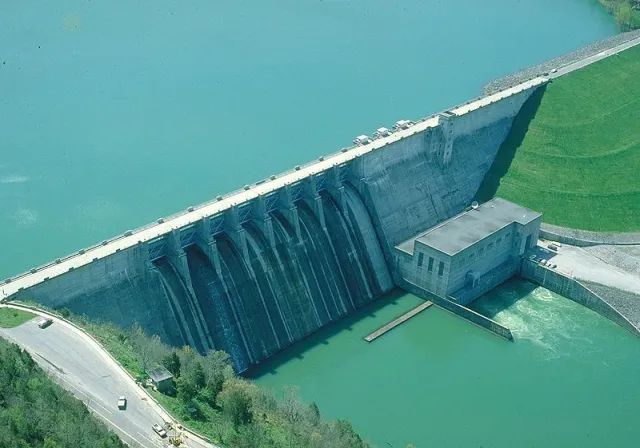
Hydroelectric power has several major advantages that make it an attractive energy source.
Renewable
Hydroelectric power is considered a renewable energy source because it relies on the water cycle. Rain and snow replenish the water in rivers and reservoirs used by hydroelectric dams. As long as there is a water cycle, hydroelectric power can be harnessed.
Low Operating Costs
Once a hydroelectric dam and power plant is constructed, the operating costs are relatively low compared to other sources like fossil fuels. Water flows through the dam naturally so there is no continual fuel cost.
Storage Capacity
The reservoirs created by hydroelectric dams can act as energy storage. Water can be held in reserve and released as needed to meet electricity demands. This storage capacity makes hydroelectric power extremely valuable for grid reliability.
Disadvantages
While hydroelectric power offers numerous benefits, it also has some drawbacks that must be considered. Two major disadvantages of hydroelectric power are the high upfront costs and the potential environmental impacts.
Constructing a hydroelectric dam and power plant requires a huge initial investment, much larger than a fossil fuel plant. Significant funding is needed for site preparation, materials, equipment and labor. Dams must be built to store water, spillways constructed, and turbines and generators installed.
Hydroelectric projects can also negatively affect river ecosystems and wildlife. Damming a river changes its natural flow, temperature, oxygen levels and sediment transport downstream. Fish migration routes are blocked, limiting access to spawning grounds. Reservoirs created by dams flood habitats and forests, altering the local environment. Careful planning is required to minimize ecosystem disruption.
Major hydroelectric projects
Some of the largest and most iconic hydroelectric projects in the world include:
Hoover Dam – Located on the Colorado River, it was constructed between 1931 and 1936. With a height of 726 feet, it was the world’s tallest dam at the time of completion. Hoover Dam has a hydroelectric capacity of 2,080 megawatts.
Three Gorges Dam – Constructed on the Yangtze River in China between 1994 and 2012, it is the world’s largest hydroelectric dam. At 185 meters tall and 2,335 meters long, Three Gorges has a staggering capacity of 22,500 megawatts.
Grand Coulee Dam – This gravity dam on the Columbia River in Washington state was built between 1933 and 1942. It has a hydro capacity of 6,809 megawatts, making it the largest hydroelectric power producer in the United States.
Itaipu Dam – A joint Brazilian-Paraguayan project completed in 1984, Itaipu is the world’s largest hydro plant in annual generation. With an installed capacity of 14,000 megawatts, Itaipu supplies 17% of Brazil’s electricity.
Sayano-Shushenskaya Dam – Located in southern Siberia, this 242 meter tall dam on the Yenisei River was commissioned in 1989. With 6,400 megawatts of output, it’s the largest power plant in Russia.
Hydroelectric capacity
Hydroelectric power currently comprises over 16% of global electricity production. This makes it the world’s largest renewable energy source for electricity generation. There is tremendous potential to further expand hydroelectric capacity, especially by upgrading existing facilities and building new pumped-storage plants. The International Hydropower Association estimates the technical potential for hydropower worldwide exceeds 16,000 TWh per year, over 4 times current production. However, growth has slowed in recent decades due to environmental concerns and the best sites already being utilized in developed countries. The largest hydro capacity growth is expected in emerging economies such as China, India, Brazil, Malaysia, Turkey and Vietnam.
Future outlook for hydroelectric power
As countries seek to transition to renewable energy sources and reduce carbon emissions, hydroelectric power is expected to play an important role. Hydroelectricity is one of the most mature and cost-effective renewable energy technologies available.
Many countries with large untapped hydro resources like China, India, Brazil, and countries in Africa are investing heavily in new hydroelectric projects. Developed countries like the United States and Canada are also upgrading existing facilities and building new pumped storage projects to support the integration of other renewables like wind and solar.
Global hydroelectric capacity is forecast to grow substantially in the coming decades. The International Energy Agency projects worldwide hydro capacity will increase by more than 25% from 2020 to 2040 under its Sustainable Development Scenario. Significant growth is expected across Africa, Asia, and Latin America.
As an established technology with storage capabilities, hydroelectricity provides flexible baseload power that can complement intermittent renewables like wind and solar. Existing facilities can also be upgraded to provide grid balancing services. With the growth of variable renewables, hydro is seen as key to enabling the transition to low carbon energy systems.
Hydroelectric in Sentences
Here are some example sentences demonstrating how to use the word “hydroelectric” in context:
Hydroelectric power provides nearly 20% of the world’s electricity.
The hydroelectric dam created a large reservoir in the valley.
The river’s strong current makes it an ideal source for hydroelectric energy.
The hydroelectric plant converts the kinetic energy of falling water into electrical energy.
Many countries are investing in new hydroelectric projects to increase renewable energy production.
The environmental impact of hydroelectric dams has become an important issue in recent years.
The hydroelectric generators require periodic maintenance to operate efficiently.
Gravity causes hydroelectric power by moving water from higher to lower elevations.
China has the largest installed hydroelectric capacity of any country in the world.
Brazil gets over 65% of its electricity from hydroelectric sources.
Conclusion
In summary, hydroelectric power is an important renewable energy source that generates electricity by utilizing the power of moving water. It has several advantages like being renewable, clean, and flexible to meet peak demands. However, it also has some disadvantages like high upfront costs, impacts on wildlife habitats, and limited suitable sites. Going forward, hydroelectricity will continue playing a major role in the world’s renewable energy mix, especially in regions with optimal geography. With more environmentally-conscious engineering of dams and fish ladders, hydro can provide clean electricity for years to come. Overall, hydroelectric power is a mature technology that harnesses the incredible power of water in a sustainable way to meet our energy needs.

